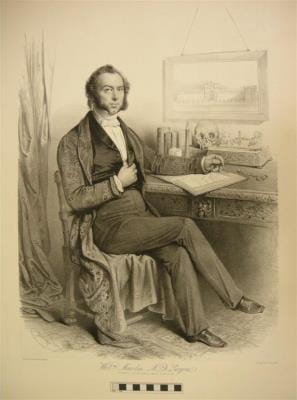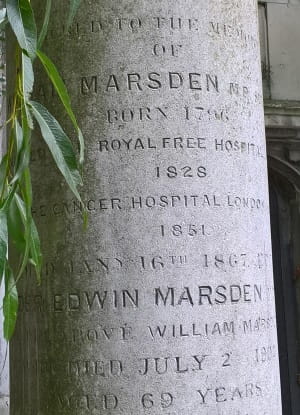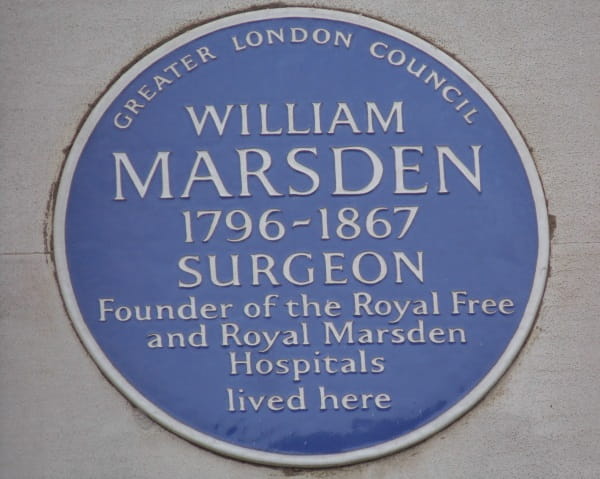One man – Two hospitals: William Marsden (1796-1867)
17 Nov 2017
Susan Isaac
Walking to work this week, I spotted an English Heritage blue plaque on the wall of number 65, Lincoln’s Inn Fields. It commemorates William Marsden (1796-1867), a surgeon who lived in the house and founded both the Royal Free and Royal Marsden Hospitals.
Born in Yorkshire in 1796, William Marsden was apprenticed to an apothecary before moving to London to study surgery under John Abernethy at St Bartholomew’s Hospital, gaining his MRCS in 1827 to become a fully-qualified surgeon. Later that year while walking home, he found a young girl almost dead from starvation and disease on the steps of St Andrew’s Church in Holborn. Marsden tried, but failed, to find hospital treatment for the girl, who died two days later. At the time, admission to hospital was only possible with a letter from a hospital governor. The power of admission was effectively controlled by the rich supporters of the hospital.

The dispensary treated all diseases and conditions, including cholera during the 1832 outbreak. This was unusual: no other hospitals admitted these patients and Marsden became a leading authority on treating the disease. William IV became a patron of the hospital in 1835 and Queen Victoria granted it a royal charter in 1837. The hospital was renamed the Royal Free, moving to larger premises at Gray’s Inn Road in 1843.

Marsden died in 1867 and this year marks the 150th anniversary of his death. His obituary (note that only the first page is free to access) in the BMJ talks of his “remarkable energy, foresight and boldness”. He had been a visionary who was able to make a practical difference to many lives. He is buried in West Norwood Cemetery where his surgeon son, Alexander Edwin Marsden, is also commemorated.
Eight other surgeons’ homes are commemorated in London with blue plaques, including Sir John Simon, Sir Victor Horsley and Lord Joseph Lister.
Susan Isaac, Information Services Manager

